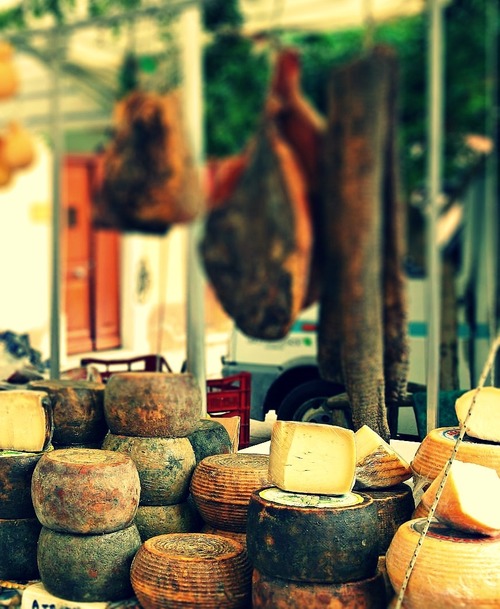
Every Summer travelers from every part of the world on holiday in Le Marche enjoy fine cheeses produced locally. The cheesemakers of Le Marche concerted effort to revive their long-dormant traditions, some of which were in danger of extinction until the recent sparks of attention to the region.
Which are these esquisite specialities? You have the Cacio La Forma di Limone, a unique cheese from the Metauro river valley made with sheep’s milk, and oddly enough, lemons. These little cheeses are shaped like lemons, and are rubbed with a mixture of salt and fresh lemon zest. After the salt is washed off, the cheese is brushed with a mixture of flour and water to ensure that the lemon zest adheres to the rind during the brief aging process. This is an example of a cheese rarely exported out of Le Marche, and a few decades ago, was in danger of absolute extinction.
Le Marche produces some notably fine Pecorinos, or sheep’s milk cheeses. Pecorino dei Monti Sibillini is an exceptional example, made in the valleys surrounding Mount Sibillini, as well as in Ascoli Piceno. The process for this Pecorino differs from the classic Tuscan method; the curds are reheated after being formed and finely cut, then they are hand-pressed into round molds. The molded cheeses are then covered in dry salt for two days, after which they are placed in a moderately humid, cool room for 20 days. During this time, they are washed, every other day, with warm water and whey. Next comes an aging period of up to two years, during which time they are brushed with their own fat, which oozes out of the rind, as well as some fine local olive oil.
“Formaggi di Fossa,” cheeses that are aged underground from mid-July to November, that can be made from cow, sheep, or goat milk. The cheeses, already two months old, are wrapped in special cotton sacks and buried in straw-lined tufa pits and sealed with chalk paste. They emerge in autumn with a distinctive, earthy tang.
Casciotta D’Urbino, the only cheese of Le Marche endowed with a D.O.P. designation (since 1996). The combined milks (70 to 80 percent sheep, 20 to 30 percent cow) is the first distinction of Casciotta D’Urbino; the method for making the cheese goes back as far as the thirteenth. Rennet is added to the milk to form soft curds, which are finely cut and reheated as with Pecorino dei Monte Sibillini. The curds are molded into rings by hand; hand pressing continues to extract the whey. The cheeses are salted either by dry-rubbing or immersion in a brine bath, after which they are stored in a very humid, cool room to age for about a month.
Click for the List of Le Marche Producers
See on marchebreaks.com
via Tumblr http://italianentertainment.tumblr.com/post/42843255870
